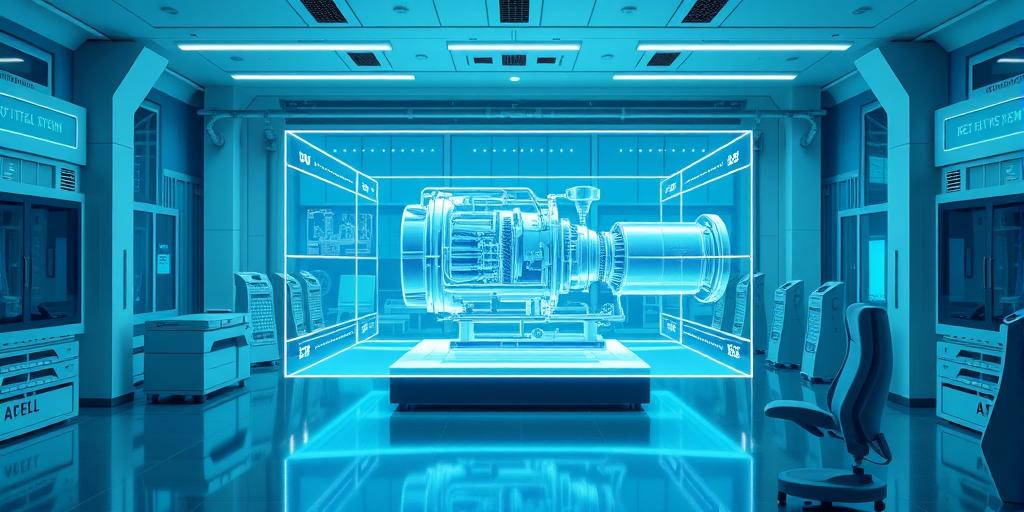Have you ever imagined a world where factories can predict and prevent equipment failures before they happen? Or a world where complex infrastructure systems are optimized in real-time, leading to significant cost savings and enhanced efficiency? This is the power of digital twins! Prepare to be amazed as we explore how digital twins are revolutionizing industry operations and paving the way for a future of unparalleled productivity and innovation. Get ready to have your mind blown by the potential of this groundbreaking technology.
What is a Digital Twin?
Simply put, a digital twin is a virtual representation of a physical object, process, or system. Think of it as a virtual mirror reflecting the real world. But it’s far more than just a simple copy; it’s a dynamic, interactive model that continuously updates itself with real-time data, providing insights that would be impossible to glean from the physical counterpart alone. This constant data flow allows for predictive analytics, allowing businesses to anticipate issues before they escalate into costly problems. This is particularly useful in manufacturing, where the cost of downtime can be enormous. This sophisticated technology leverages data from multiple sources, including sensors, IoT devices, and enterprise systems, to create a highly accurate virtual replica. The beauty of the digital twin lies in its ability to simulate various scenarios and test different interventions, helping optimize operations and minimize risks. Imagine being able to run “what-if” scenarios on your manufacturing line to improve efficiency, without ever halting production. That’s the power of the digital twin!
Types of Digital Twins
Digital twins aren’t one-size-fits-all. They come in various types depending on the level of detail and the specific application. Some twins may be highly detailed and complex, capable of simulating physical processes with remarkable accuracy, while others may be simpler, focusing on key performance indicators (KPIs). This versatility makes digital twins adaptable to a wide array of industries and use cases.
Benefits of Utilizing Digital Twins
From enhanced operational efficiency to cost reduction and improved product quality, the advantages of implementing digital twin technology are undeniable. Reduced downtime through predictive maintenance is a standout benefit. Imagine predicting equipment failures and proactively scheduling maintenance, preventing costly production halts. This proactive approach is one of the key reasons why leading industries are rapidly adopting this game-changing technology.
Transforming Industry Operations with Digital Twins
The impact of digital twins extends across numerous industries, offering transformative potential. Let’s delve into some specific examples of how digital twins are reshaping the landscape of various sectors.
Manufacturing
In manufacturing, digital twins are revolutionizing production lines. By simulating processes, manufacturers can identify bottlenecks, optimize workflows, and enhance product quality. This leads to increased efficiency, reduced waste, and lower production costs. The ability to run simulations and explore various “what-if” scenarios is invaluable in fine-tuning manufacturing operations for maximum productivity.
Healthcare
In healthcare, digital twins are paving the way for personalized medicine. These highly detailed digital models allow doctors to simulate treatments and develop personalized plans, leading to improved patient outcomes. Imagine a virtual model of a patient’s heart, allowing doctors to practice complex surgeries before ever entering the operating room. The possibilities are revolutionary.
Energy
Digital twins are improving efficiency and sustainability in the energy sector. By accurately modeling power grids, energy companies can better predict and manage energy consumption, reducing waste and ensuring grid stability. This efficient resource management is a critical tool in a world increasingly concerned about sustainable practices. The real-time insights from digital twins allow for better planning and management of energy resources.
The Future of Digital Twins
As technology continues to advance, the capabilities of digital twins will only grow. We can expect to see more sophisticated models with increased accuracy and more advanced simulations. The integration of artificial intelligence (AI) and machine learning (ML) will further enhance predictive capabilities, leading to more effective decision-making across various sectors. The convergence of AI and digital twin technology is poised to unlock even greater possibilities, making the future of industry operations incredibly exciting.
Challenges and Considerations
While digital twins offer tremendous potential, there are also significant challenges. The complexity of creating and maintaining accurate models, the need for vast amounts of data, and the potential costs of implementation are among the hurdles businesses need to overcome. However, the benefits far outweigh the challenges, and the rapid technological advancements in data analytics and AI are making digital twins more accessible and cost-effective than ever before.
The future is digital, and digital twins are leading the charge! Embrace the power of virtual reality and unlock the potential for optimized, efficient, and sustainable industry operations. Are you ready to embrace the future? Contact us today to explore how digital twins can transform your business!




